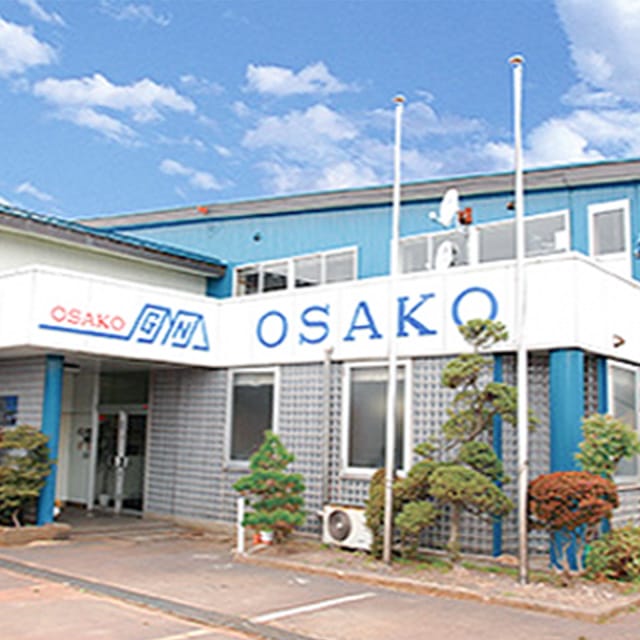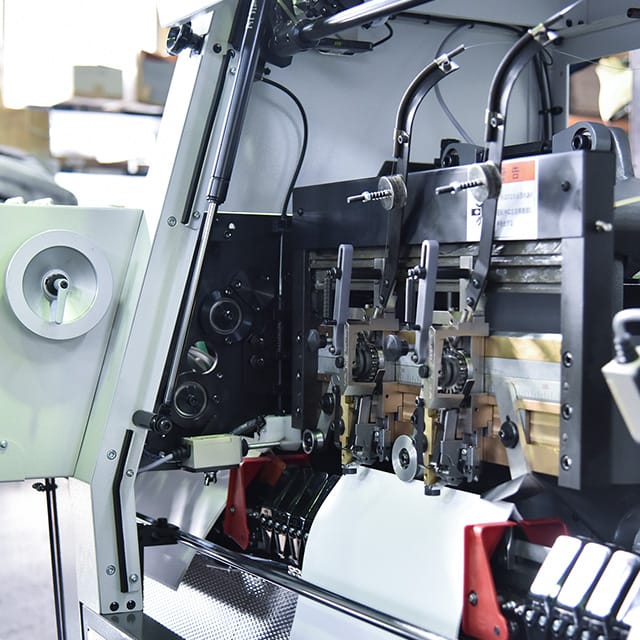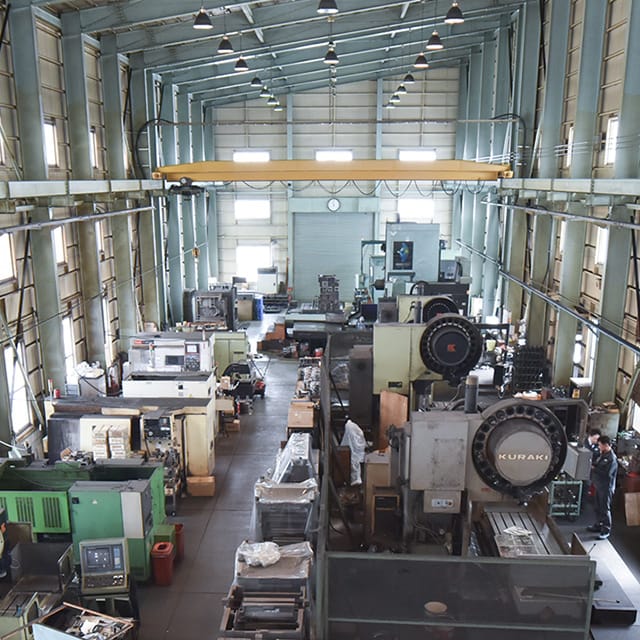History of OSAKO
History of OSAKO
Seeking the highest level of quality in the world since its founding in 1916.
| 1916 | Established Osako Printing Bookbinding Machine Seisakusho in Konya-cho, Kanda-ku, Tokyo (currently Konya-cho, Chiyoda-ku, Tokyo). Manufactured and sold wire binding machines. |
|---|---|
| 1946 | Became a company organization and changed the company name to Osako Printing and Book Binding Machinery Seisakusho Limited Parnership Company. |
| 1947 | Changed the company name to Osako Seisakusho Limited Parnership Company. The stated capital was JPY330,000 yen. Developed a full-scale GNTK-I model saddle stitcher in response to the needs of the industry and started selling. |
| 1957 | Developed and started selling GNTK-II model and III model saddle stitcher. |
| 1960 | Completed GN-5 model rotary feeder. Succeeded in labor-saving for bookbinding and attracted attention from the industry. |
| 1964 | Developed and started selling the rotary RS-5 model high-speed saddle stitching machine and OS-5 model rotary feeder machine that can be used for high-speed production, such as for weekly magazines with high amounts of publication. |
| 1966 | Stated capital became JPY1,320,000 due to a capital increse. |
| 1967 | Changed the company name to OSAKO & CO., LTD. and moved to Toshima-ku, Tokyo (stated capital: JPY3,470,000). |
| 1968 | Developed and started selling RS-6 model high speed saddle stitching machine and OS-6 model rotary feeder machine. |
| 1969 | Moved the headquarters and main factory of OSAKO & CO., LTD. to Saitama. |
| 1971 | Completed the three-knife trimmer and succeeded in making the saddle stitcher a complete line. |
| 1972 | Stated capital became JPY10,000,000 due to a capital increase. |
| 1973 | Signed an agency contract with Consolidated Company in the United States. Began full-scale exports to the US and the world by direct trading. Established an affiliated company, Osako Seiki & Co., Ltd., in Takahata-machi, Yamagata, in order to respond to the increase in orders. |
| 1974 | Opened the Osaka Sales Office in Kita-ku, Osaka-shi. |
| 1977 | Stated capital doubled to JPY20,000,000, due to a capital increase. |
| 1980 | Expanded second factory of Osako Seiki & Co., Ltd. |
| 1981 | Completed 368 model ultra-high speed saddle stitching machine. The machine was exhibited at drupa ’81 in Dusseldorf, Germany. |
| 1982 | Started exporting to the former Soviet Union. Delivered 8 units to Pravda and four other companies. |
| 1983 | Developed and started selling 173 model saddle stitcher. Introduced the machine at IGAS’83 TOKYO. Exhibited 368 model ultra-high speed saddle stitcher at the International Trade Fair held in Moscow, and received a gold prize from the former Soviet Union Chamber of Commerce. |
| 1984 | Exhibited 368 model ultra-high speed saddle stitching machine at IPEX’84in Birmingham, England. |
| 1985 | Exhibited 368 model ultra-high speed saddle stitcher and 173 model fully automatic saddle stitching machine at PRINT’85 in Chicago, USA. Introduced 206 model computer system cross cutter at IGAS’85 TOKYO. |
| 1986 | Exhibited 368 model ultra-high speed saddle stitcher and 173 model saddle stitcher in a solo booth at drupa 86 in Dusseldorf, Germany. Built the third Osako Seiki & Co., Ltd. factory. Installed a 5-sided processing machine made by Okuma Steel. Saddle stitcher and three-knife trimmer machine processes were unmanned, leading to labor-saving. |
| 1987 | Introduced the vertical signature stacking style / 525 model ultra-high speed saddle stitching machine at IGAS’87 TOKYO for the first time in Japan and began sales. |
| 1989 | Signed an agency agreement with Best Graphics Inc to further expand the US market. |
| 1991 | Introduced 535 model ultra-high speed saddle stitching machine, the successor of the 525 model; 665 model saddle stitcher that binds B4 horizontal books with automatic binding; and 207 model and 208 model computer systems cross cutters all together at IGAS’91. |
| 1995 | Introduced 378 model ultra-high speed saddle stitching machine and 612-U model reverse binding / normal binding machine at IGAS’95. |
| 2000 | Developed and began sales of the OT-2000 model, a fore edge-cut three-knife trimmer machine. |
| 2002 | Developed Estar, which features low cost and computerized control. It became the best-selling product in the Asian region. |
| 2003 | Introduced and began sales of the Tener ultra-high speed saddle stitcher line which further improved the perfection of the 378 model and the top model Poder at IGAS’03. |
| 2007 | Completed new office building with a showroom. Introduced and began sales of Tener Alpha, the successor to the best-selling Tener, at IGAS’07 (photo). |
| 2012 | Exhibited two lines of saddle stitcher, Tener Alpha and Micro, at the exhibition of printing and binding machines in Dusseldorf, Germany, one of the four largest exhibitions in the world in May of the same year. Delivered the exhibited machines to the largest publishing and printing company in the Baltic States (Latvia). |
| 2013 | The folded leaf inspection device was developed and introduced as the world’s first in the industry. The first attempt to install it on a three-knife trimmer. Received orders of 24 units from the top three major printing companies. |
| 2018 | Exhibited Tener α and Micro at JGAS 2018. |
| 2020 | All operations were transferred to Osako Seiki & Co., Ltd. from OSAKO & CO., LTD. |
| 2021 Apr. | Developed oversized cover feeder 310AL. |
| 2021 Oct. | With 100% share transfer, it became a wholly owned subsidiary of YOSHINO MACHINERY CO., LTD. |
| 2022 Jan. | New officers have been elected and assumed by the Extraordinary General Meeting of Shareholders and the Board of Directors. |


